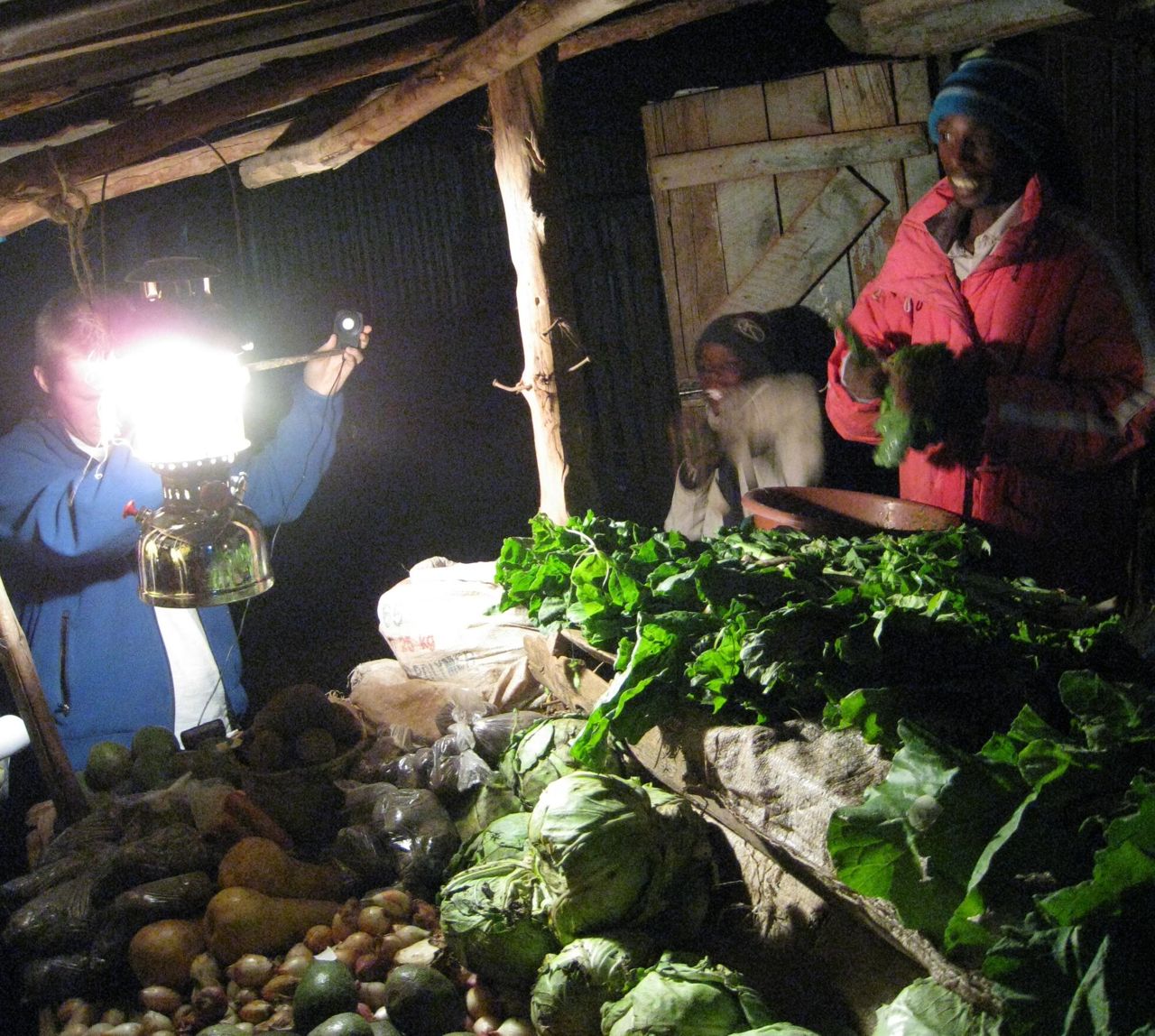Illumination Survey Techniques:
In-situ Measurements of Lighting System Performance and a User Preference Survey for Illuminance in an Off-Grid, African Setting
Peter Alstone†, Arne Jacobson†, & Evan Mills#
†Schatz Energy Research Center, Humboldt State University
#Lawrence Berkeley National Laboratory
Lumina Research Note #7
August 26, 2010
Download Full Report [PDF]

Efforts to promote rechargeable electric lighting as a replacement for fuel-based light sources in developing countries are typically predicated on the notion that lighting service levels can be maintained or improved while reducing the costs and environmental impacts of existing practices. However, the extremely low incomes of those who depend on fuel-based lighting create a need to balance the hypothetically possible or desirable levels of light with those that are sufficient and affordable.
In a pilot study of four night vendors in Kenya, we document a field technique we developed to simultaneously measure the effectiveness of lighting service provided by a lighting system and conduct a survey of lighting service demand by end-users. We took gridded illuminance measurements across each vendor’s working and selling area, with users indicating the sufficiency of light at each point. User light sources included a mix of kerosene-fueled hurricane lanterns, pressure lamps, and LED lanterns.
We observed illuminance levels ranging from just above zero to 150 lux. The LED systems markedly improved the lighting service levels over those provided by kerosene-fueled hurricane lanterns. Users reported that the minimum acceptable threshold was about 2 lux. The results also indicated that the LED lamps in use by the subjects did not always provide sufficient illumination over the desired retail areas. Our sample size is much too small, however, to reach any conclusions about requirements in the broader population. Given the small number of subjects and very specific type of user, our results should be regarded as indicative rather than conclusive. We recommend replicating the method at larger scales and across a variety of user types and contexts. Policymakers should revisit the subject of recommended illuminance levels regularly as LED technology advances and the price/service balance point evolves.
Acknowledgments: This work was funded by The Rosenfeld Fund of the Blum Center for Developing Economies at UC Berkeley, through the U.S. Department of Energy under Contract No. DE-AC02-05CH11231. Art Rosenfeld has been a key supporter of this work. We wish to extend special thanks to the many people in Kenya who participated in this study. We are grateful to Maina Mumbi for his expert contributions to the fieldwork, and to the entire Mumbi family for hosting our team in Maai Mahiu. We also thank Erik Page for his insights about illumination survey techniques and Jennifer Tracy for helping collect field data.
